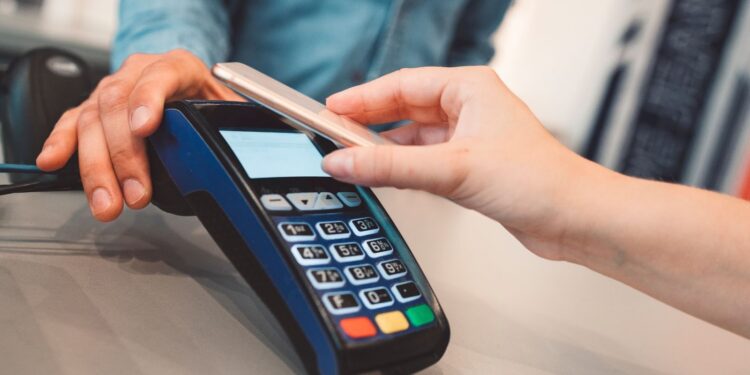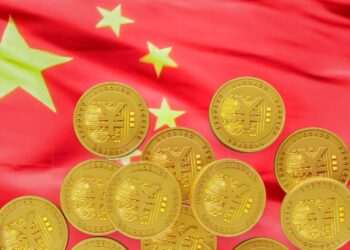Once BPS (bisphenol S) is collected, it goes through a series of processes before it is widely used in the manufacturing of consumer goods.
Here is what happens to BPS after it is collected:
1. Washing and Drying: The collected BPS is washed in hot water to remove any impurities and dried to remove excess water.
2. Purification Process: The dried BPS is then purified using a chemical process to remove any remaining impurities for higher quality material.
3. Granulation: After purification, the material is converted into granular form, making it easier to transport and use in the manufacturing process.
4. Manufacturing: Once the granular material is ready, it can be used in a variety of manufacturing processes, such as the production of plastic bottles, food containers, and electronics.
It is worth mentioning that there is growing evidence that BPS, a substitute for BPA, has negative health effects.
Pro Tip: To reduce your exposure to BPS, choose consumer goods made from glass, stainless steel, or BPA/BPS-free plastics.
Collection of BPS
BPS, or Binary Payment System, is a type of payment system that allows merchants to accept digital payments. The system is easy to integrate into existing payment systems and works with any currency. Once BPS is collected, it goes through a series of steps to ensure that the payment is secure and processed correctly.
In this article, we will look at what happens to BPS after it is collected.

Different methods of collecting BPS
BPS or Bisphenol S is a chemical compound used in the production of various consumer goods such as plastic containers, water bottles, and paper receipts. There are several methods of collecting BPS, including the use of solvents, targeting specific wastewater treatment processes, and employing polystyrene foam (PSF) materials to absorb BPS from water sources.
Once collected, the BPS undergoes various treatment processes to either destroy or remove it from the environment. Researchers have investigated different treatment methods such as microbial degradation, photocatalytic degradation, and activated carbon treatment to remove BPS.
Microbial degradation uses bacteria or fungi to break down BPS into harmless compounds, while photocatalytic degradation uses light to break down BPS. Activated carbon treatment involves filtering water through activated carbon to absorb BPS from water sources.
It is crucial to collect and dispose of BPS properly to prevent pollution of the environment and potential health risks to humans and wildlife.
Storage of BPS before processing
BPS or Black Pepper Spikes are collected from the pepper vine during harvesting, and proper storage of BPS is essential for preserving its quality and flavour before processing.
Here are some tips for storing BPS:
BPS should be collected before it becomes completely mature and turns red. Only green BPS should be collected, as these contain higher levels of piperine, which is responsible for the pungent flavour of black pepper.
BPS should be dried and stored in a cool, dry place to prevent moisture from affecting the quality of the pepper.
Moisture can also cause mould growth, which can ruin the flavour and aroma of the pepper. Therefore, it is essential to store BPS in a dry environment.
Once the BPS is properly stored, it can then be processed into black pepper that is commonly used in our daily lives.
Fecha Y Lugar De Cobro BPS
Once the biodegradable waste, BPS (Biodegradable Polymer Substances), is collected, it is transported to the processing plant for further treatment. The transportation process is crucial in ensuring that the waste is transported efficiently and with minimal impact on the environment.
Here are some important considerations to keep in mind while transporting BPS:
1. Use covered vehicles to prevent littering or any other form of environmental pollution during transportation.
2. Ensure that the transportation process is done in the shortest time possible to avoid odor and any potential health hazards that may arise from the waste’s fermentation.
3. Make sure that the transporters follow standard safety guidelines for handling waste and are equipped with the proper tools and equipment to handle the waste safely.
After the waste is transported to the processing plant, it is treated through various methods such as composting, anaerobic digestion, or other methods. These ways help process the BPS to produce useful byproducts such as fuel, fertiliser, or biogas, which can contribute positively to the environment.
Processing of BPS
BPS stands for consumer packaged goods, and once it is collected, it goes through a range of processes to ensure the safety and quality of the products.
This article will discuss the process of processing BPS, what happens to it after it is collected, and how it helps provide consumer safety.
Sorting of BPS
BPS, or broken rice is typically the rice that is left over after milling long-grain rice. The sorting of BPS is a crucial part of processing it as it helps to remove any impurities that may have been collected during milling.
There are two types of sorting methods that are typically used in BPS processing – visual sorting and machine sorting.
Visual sorting: In visual sorting, trained technicians or workers sort through the rice to remove any discoloured or damaged kernels, dust, and debris.
Machine sorting: In machine sorting, the rice is passed through machines that use sensors, cameras, and air jets to remove any impurities or discoloured kernels.
After sorting, BPS is usually packaged and sold as a separate product for a variety of uses, including animal feed, brewing beer, and making rice flour.
Pro tip: BPS is also used as a more affordable alternative to long-grain rice in some cultures, like in Southeast Asia. It is also used to make traditional dishes like congee and Hainanese chicken rice.

Cleaning of BPS
BPS (Black Polythene Sheets) are post-agricultural waste that can be recycled and used as a raw material for making recycled plastic products. The cleaning process involves several steps that should be followed for maximum effectiveness.
Initially, the collected waste is sorted and cleaned of any contamination such as stones, dirt, and other impurities. The cleaned waste is then shredded into small pieces and washed thoroughly to remove any remaining impurities. The resulting clean pieces are dried and then taken to the extruder where they are melted and made ready for forming into a new product.
The recycling of BPS is an eco-friendly and cost-effective method. It helps in reducing plastic waste and environmental degradation while also contributing to the economy.
Pro tip: Always opt for recycling BPS and partner with recycling companies for an eco-conscious waste-management strategy.
Grinding and Shredding of BPS
After collecting BPS (Black Pepper Spent) from the pepper industry, it goes through a process of grinding and shredding to make it reusable and suitable for other purposes.
Grinding: During the grinding process, BPS is ground and sieved to a fine powder with a specific particle size distribution. The resulting powder can be used as a high-quality spice with a unique flavour profile.
Shredding: In the shredding process, BPS is cut into small pieces that can be used as a raw material for several applications, including animal feed, biofuels, and composting.
The process of grinding and shredding of BPS not only provides a way of recycling the waste material but also helps in reducing the environmental pollution caused by the disposal of BPS.
Pro tip: Instead of throwing away BPS, try using it as a natural fertiliser for your garden. The high nitrogen content in BPS makes it an excellent organic fertiliser for plants.
Manufacture of Products from BPS
BPS (Biopolymer Pre-polymer Solutions) is a type of biopolymer that is typically sourced from renewable sources, such as starch, corn, and sugarcane. When BPS is collected, it can then be used for a variety of different purposes. This includes the manufacture of products, such as diapers, biodegradable cups, and medical supplies.
In this article, we will discuss the process of turning BPS into the manufacturing of products.
Products made from recycled BPS
BPS, or Bisphenol S, is a commonly used material for packaging, thermal paper, and other products. However, BPS is also recyclable and can be repurposed into a variety of new products.
Here are some examples of items made from recycled BPS:
- Straws and utensils
- Reusable food storage containers
- Laptop cases
- Mobile phone covers
- Water bottles and cups
After BPS is collected for recycling, it is cleaned, melted down, and formed into pellets or flakes. These can then be used to create new products with similar properties to the original material. By using recycled BPS, we reduce waste and conserve resources.
Uses of BPS products
BPS, or bisphenol-S, is a chemical compound commonly used as an alternative to BPA in various products. BPS is used in many products, such as thermal paper receipts, plastic food containers, and water bottles.
Here are a few examples of products that are made from BPS:
- Thermal Paper: BPS is used in thermal paper as a color developer in place of BPA.
- Epoxy Resins: BPS is used as a substitute for BPA in lining food and beverage cans.
- Medical Devices: BPS is used in medical devices such as IV tubing and dental sealants.
What happens to BPS after it’s collected depends on how it’s used. In some cases, such as thermal paper receipts, BPS can end up in landfills or be incinerated, potentially causing environmental harm. In other cases, such as medical devices, BPS is safely disposed of according to industry regulations.
Pro tip: Opt for BPS-free products to reduce your exposure to this chemical compound.

Current technologies used to make products from BPS
BPS or Biodegradable Plastic Starch is becoming increasingly popular as an eco-friendly alternative to traditional plastics, and several technologies are being used to manufacture products from it.
One such technology is extrusion. During this process, BPS granules are melted and extruded through a die to create various product shapes like cutlery, bags, or containers. Another technology being used to manufacture BPS products is injection moulding. This involves heating the BPS granules and injecting them into a mould to form the desired product shape.
Several factors including the product application, desired properties, and costs of manufacturing affect the choice of technology used to create products from BPS. As more research is conducted, newer, more efficient, and cost-effective technologies may emerge to manufacture BPS products in the future.
















